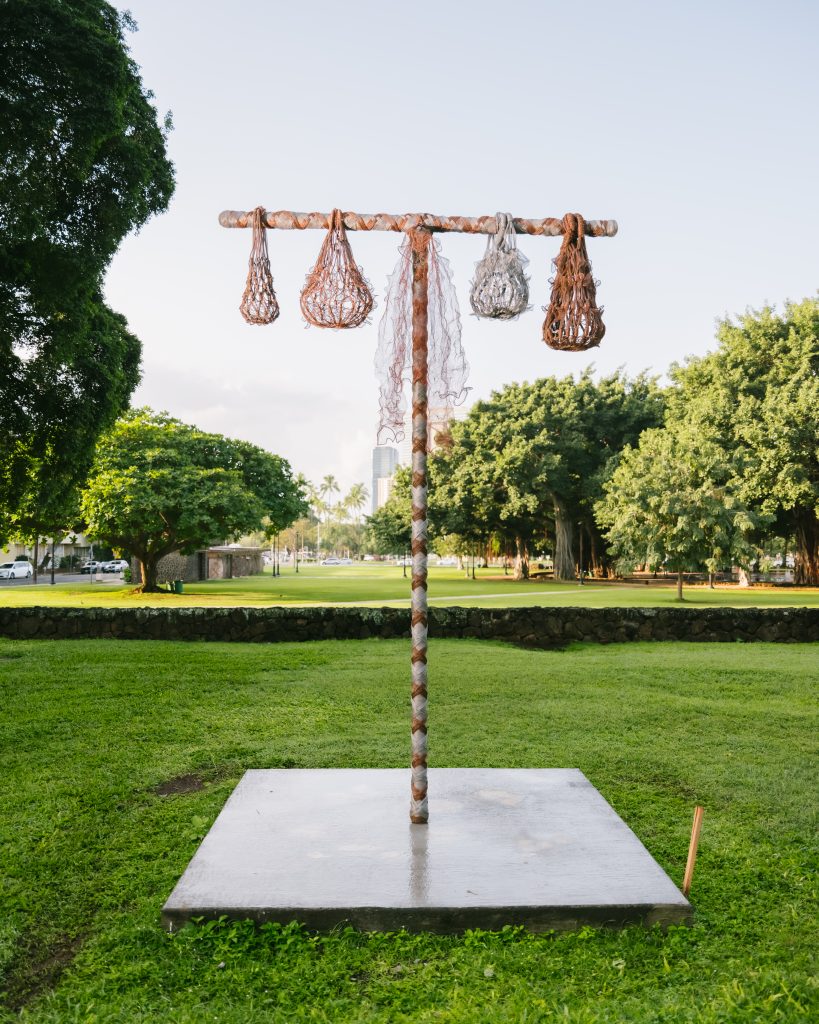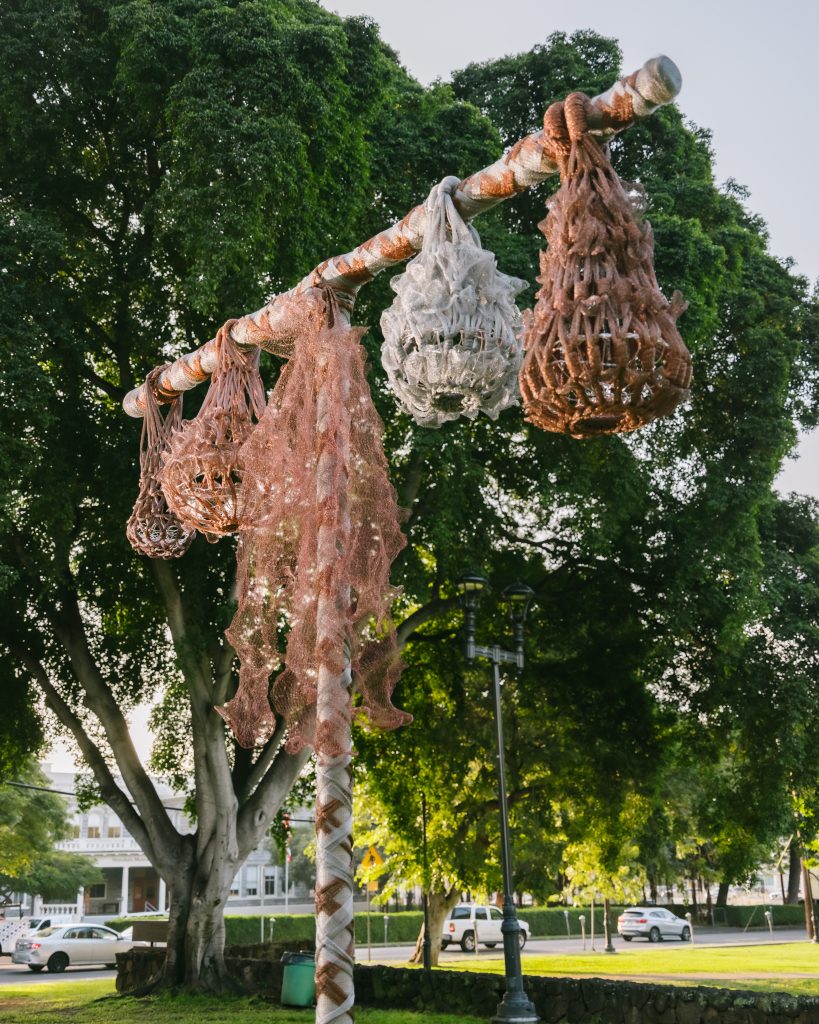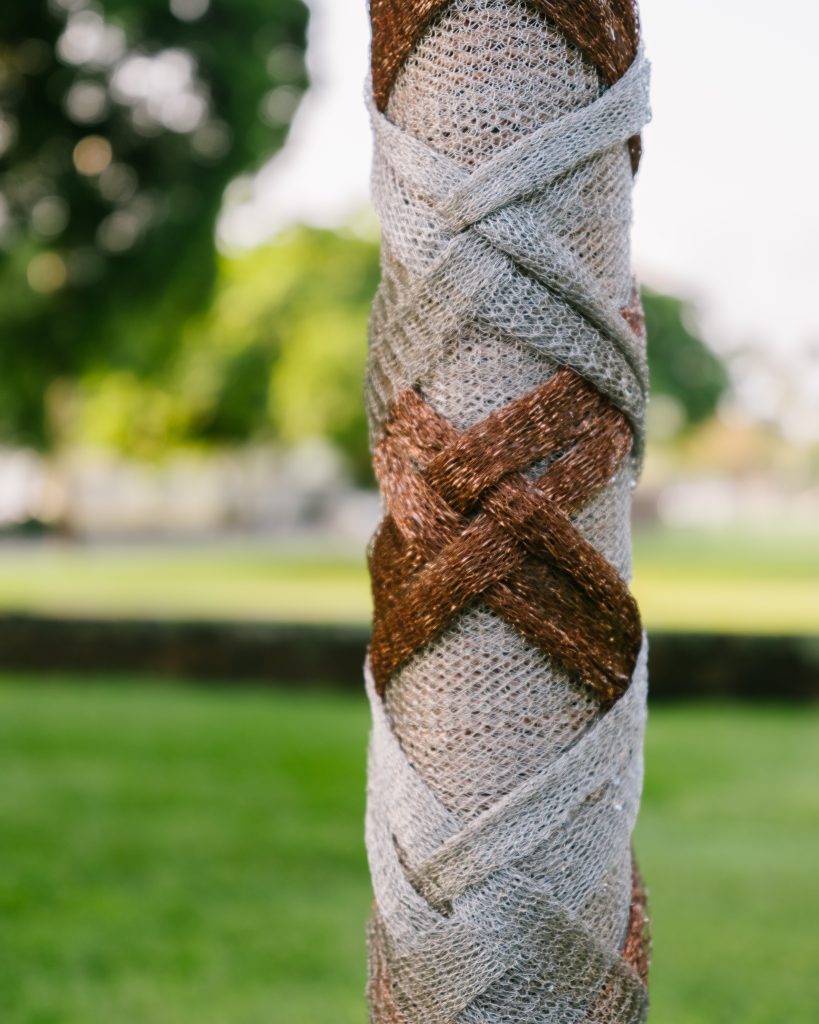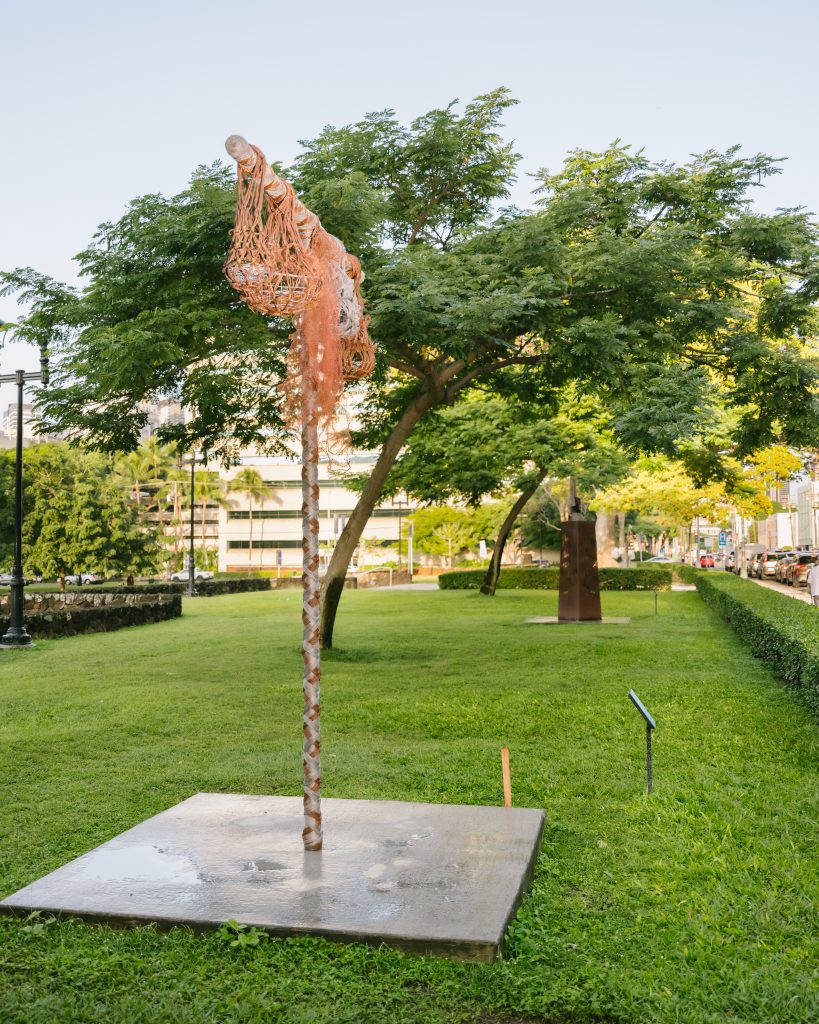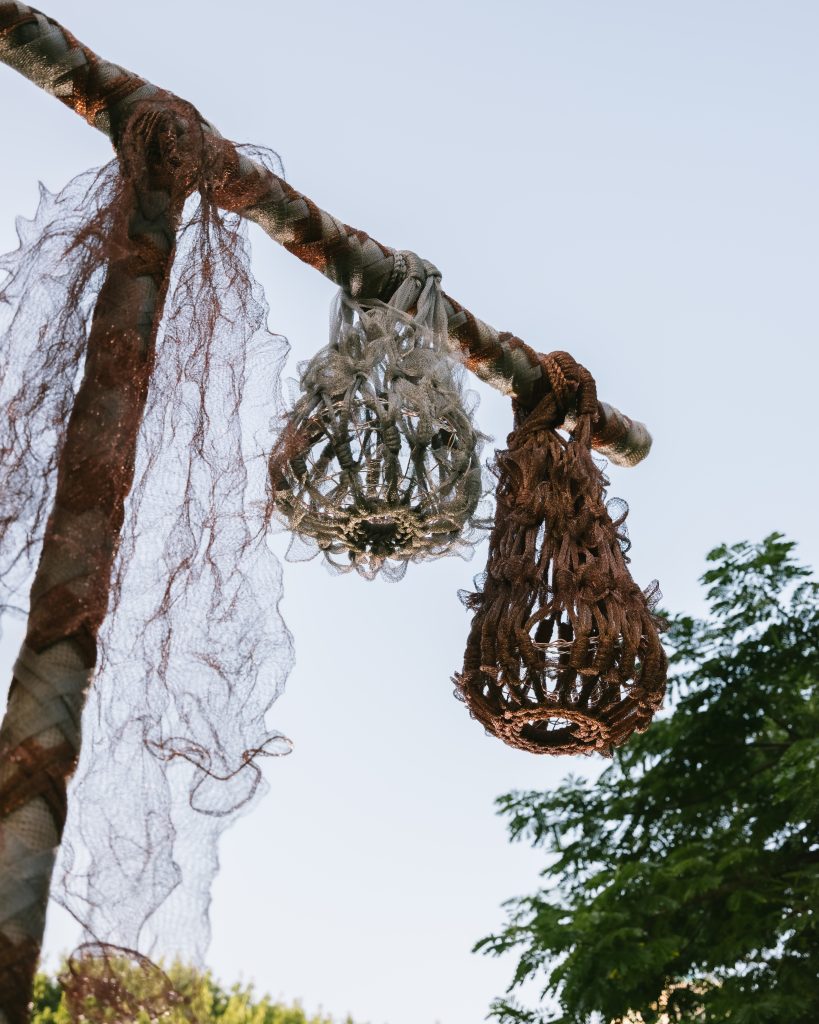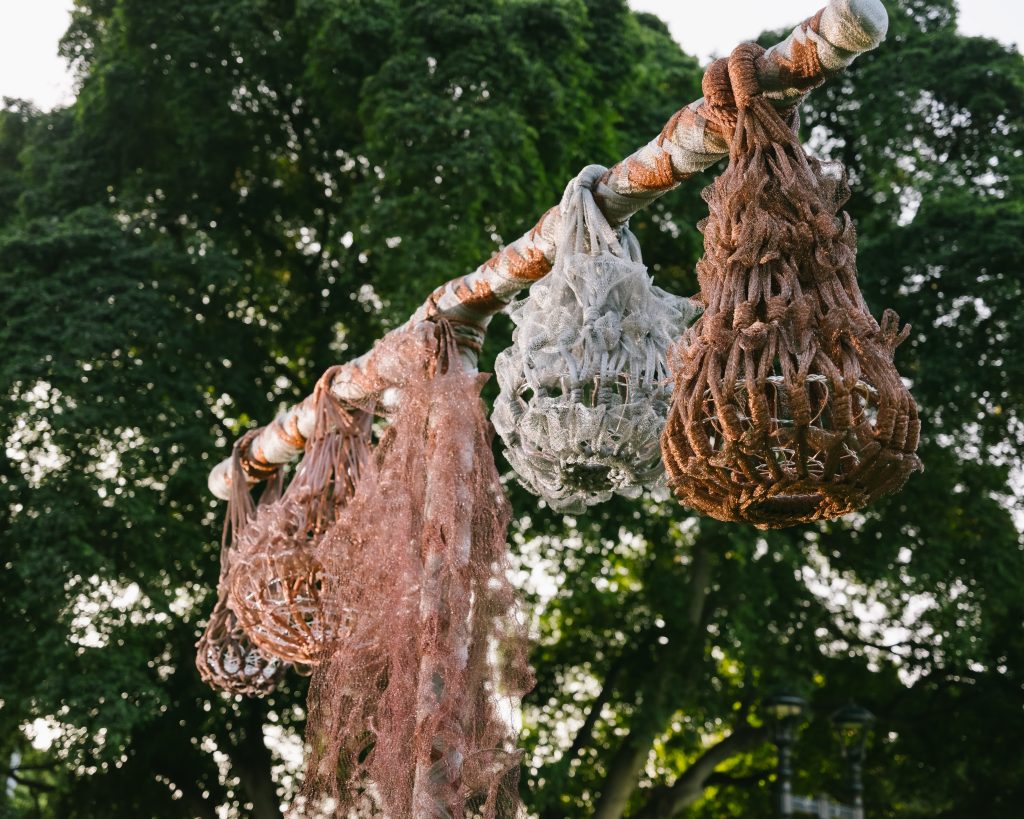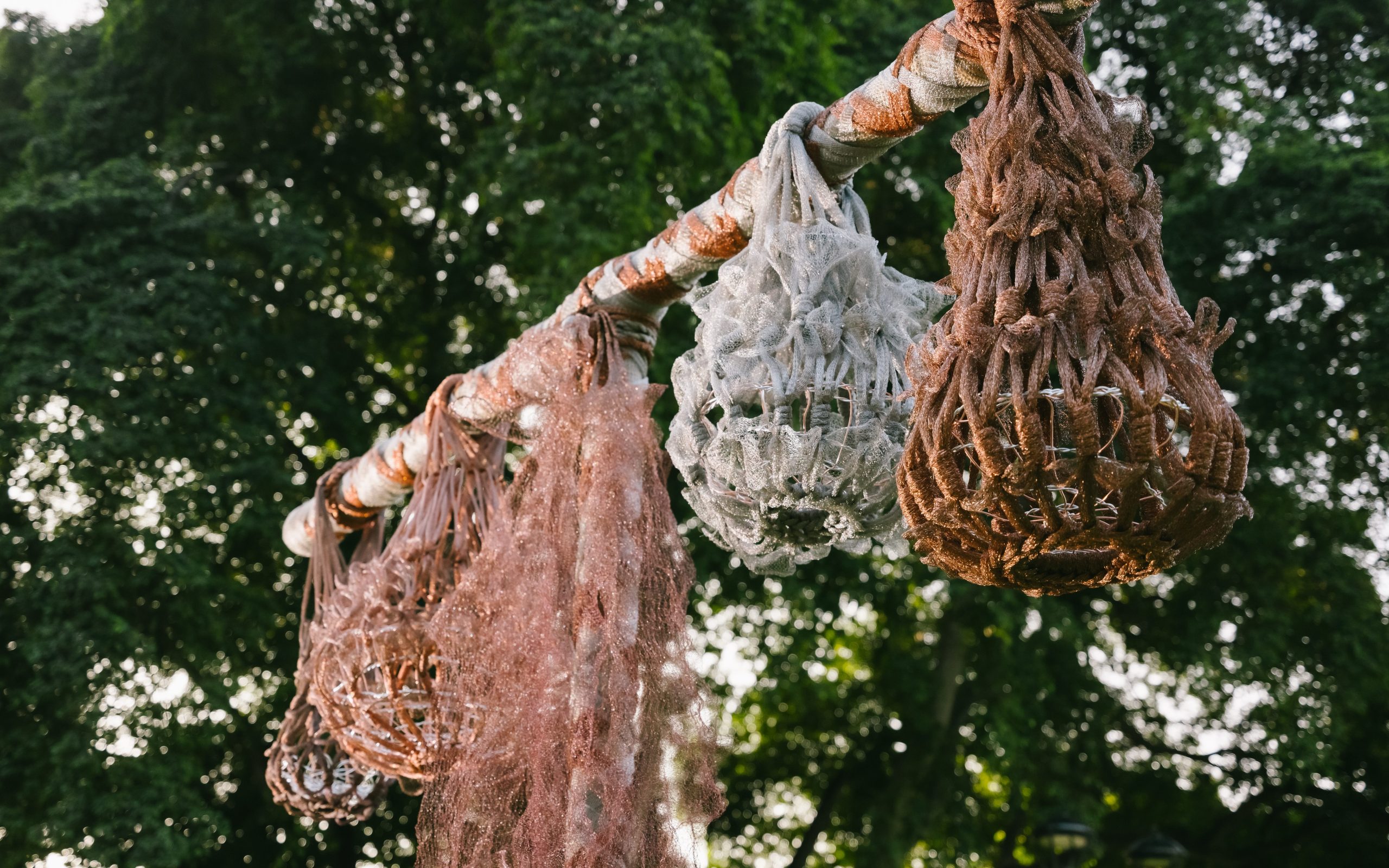
Marques Hanalei Marzan
Kauikamauliola
2025
Stainless steel, steel, copper, and synthetic rope
This sculpture honors the history of Thomas Square Park and uplifts the mana of the Hawaiian Kingdom. Thomas Square Park, the site of Lā Hoʻihoʻi Ea, Sovereignty Restoration Day, marks the restoration of the Kingdom of Hawaiʻi’s sovereignty on July 31, 1843, following a brief foreign incursion. In 1849, the Kingdom of Hawai‘i designated land at the site for a public park, and on January 22, 1850, the Kingdom Privy Council formally established Thomas Square. The park’s grand opening took place on April 7, 1887, featuring an evening concert by the Royal Hawaiian Band in a newly built bandstand with seating for several hundred. In 1938, the Daughters of Hawai‘i placed a commemorative plaque at the site, further recognizing its historical significance.
Kauikamauliola takes inspiration from the practice of kōkō puʻupuʻu, customary Hawaiian knotted carrying nets, and is presented as a ten-foot tall by six-foot wide haka, or suspension post with four hanging kōkō. Constructed with woven copper and stainless mesh in an open style, these forms reference the role of holding food, precious family belongings, and personal possessions to ensure their safekeeping during travel. Here, the nets serve as a symbolic vessel for protecting and sustaining the stories embedded in Thomas Square Park, recognizing it as a wahi pana—a storied and sacred place.
By incorporating materials such as copper and steel, the sculpture forges a new connection to the site while ensuring durability for the public space. Marzan, known for his expertise for Hawaiian fiber techniques and as a cultural practitioner, expands his visual repertoire in this large-scale public artwork, bringing traditional forms into a contemporary sculptural context.
About Marques Hanalei Marzan
Marques Hanalei Marzan is a Hawaiian and Oceanic fibers culture bearer and contemporary visual artist born and raised in Kāne‘ohe, Hawaiʻi. His skill, knowledge, and experience is highly acknowledged within his community where he serves as a mentor and advocate, promoting sustainable gathering practices, perpetuating Hawaiian fiber techniques, and instilling indigenous values in his students. He trained under many esteemed experts in Hawai‘i including master weavers, Julia Minerva Ka‘awa and Esther Kakalia Westmoreland. Marzan also serves as the Cultural Advisor and the Wayne Pitluck and Judith Pyle Curator for Cultural Resilience at the Bishop Museum in Honolulu. He promotes the integration of indigenous mindsets and practices within the Museum field and assists cultural practitioners and the community with engaging ancestors and their creative expressions at the Museum, recognizing the need to legitimize indigenous voices.
